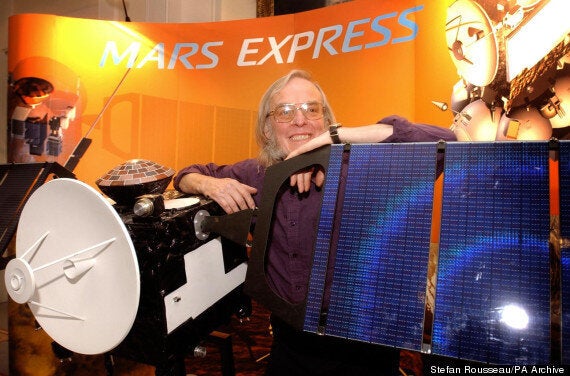The fate of the Beagle 2 Mars lander has been a mystery since it was last heard of on December 19, 2003 as it headed for the surface of the Red Planet.
Here is a timeline of events from its launch:
2003
- April 13: Beagle 2 arrives at the Baikonur spaceport in Kazakhstan.
- May 19: The official countdown to the launch of the European Space Agency's (ESA) Mars Express begins in London. Science minister Lord Sainsbury switches on a giant digital clock at the Royal Society precisely two weeks and four hours before blast-off.
- June 2, 6.45pm UK time: A Russian Soyuz-Fregat rocket launches Mars Express into space, with Beagle 2 loaded on board. About two hours later mission controllers confirm that the spacecraft has successfully left Earth's orbit.
- June 5: Beagle 2 passes its first big test when explosive bolts clamping it to Mars Express are fired and released. The bolts were there to prevent the craft being shaken about and damaged during the launch.
- October 28: Mars Express is blasted by radiation from a powerful solar flare which temporarily knocks out its navigation systems. Beagle 2, which was designed to be radiation-proof, was unscathed. The same solar storm damaged Nasa's Mars Odyssey spacecraft and forced a Japanese mission to Mars, Nozomi, to be abandoned.
- November 11: A rocket thrust sends Mars Express on its final course to the Red Planet, 12.5 million miles away.

Advertisement
Advertisement
Advertisement
Advertisement
2004:
- January 4: Scientists are forced to devise a new communications strategy because Mars Express is not in the orbit they originally planned.
- January 7: The Orbiter mothership is due to fly over Beagle 2's landing site, enabling it for the first time to try and establish contact with the missing space craft.
- 2004
- January 27: Scientists attempted to "reboot" the probe using a command signal transmitted by the American Mars Odyssey orbiter, without any success.
- May 24: Prof Pillinger says a Martian heatwave caused by dust storms whipping up the atmosphere probably led to the failure of the probe, as investigators released a report which was unable to pin the blame unambiguously on a single failure or shortcoming.
- July 7: Prof Pillinger defends the project against claims from MPs that it was "amateurish", telling them: "This project was never amateur. It might have been an image that was worth portraying. It might have been a media-friendly image, of boffins going to Mars."
- August 24: A second report into Beagle 2's disappearance is unable to find out what went wrong.
- November 2: The Government's Science and Technology Committee criticises ministers and the ESA, with chairman Dr Ian Gibson saying Beagle 2 partly failed because they "wanted a Mars lander on the cheap" and they should have underwritten its costs.
2005
- February 3: An official report from the joint Commission of Inquiry set up by British science minister Lord Sainsbury and Esa director general Jean-Jacques Dordain says the probe should never have been given the go-ahead by the ESA because of funding issues.
- December 20: Prof Pillinger says that the latest images of the Martian surface from from Nasa's Mars Global Surveyor spacecraft suggest Beagle 2 came down in a crater close to the planned landing site. However, subsequent pictures of the crater show it is empty.
2008
December 17: Engineers from the University of Queensland in Australia suggest Beagle 2 may have met a fiery end because of a miscalculation in the rate of spin as it detached from Mars Express, causing it to spin too fast.
2014
May 7: Prof Pillinger dies at the age of 70